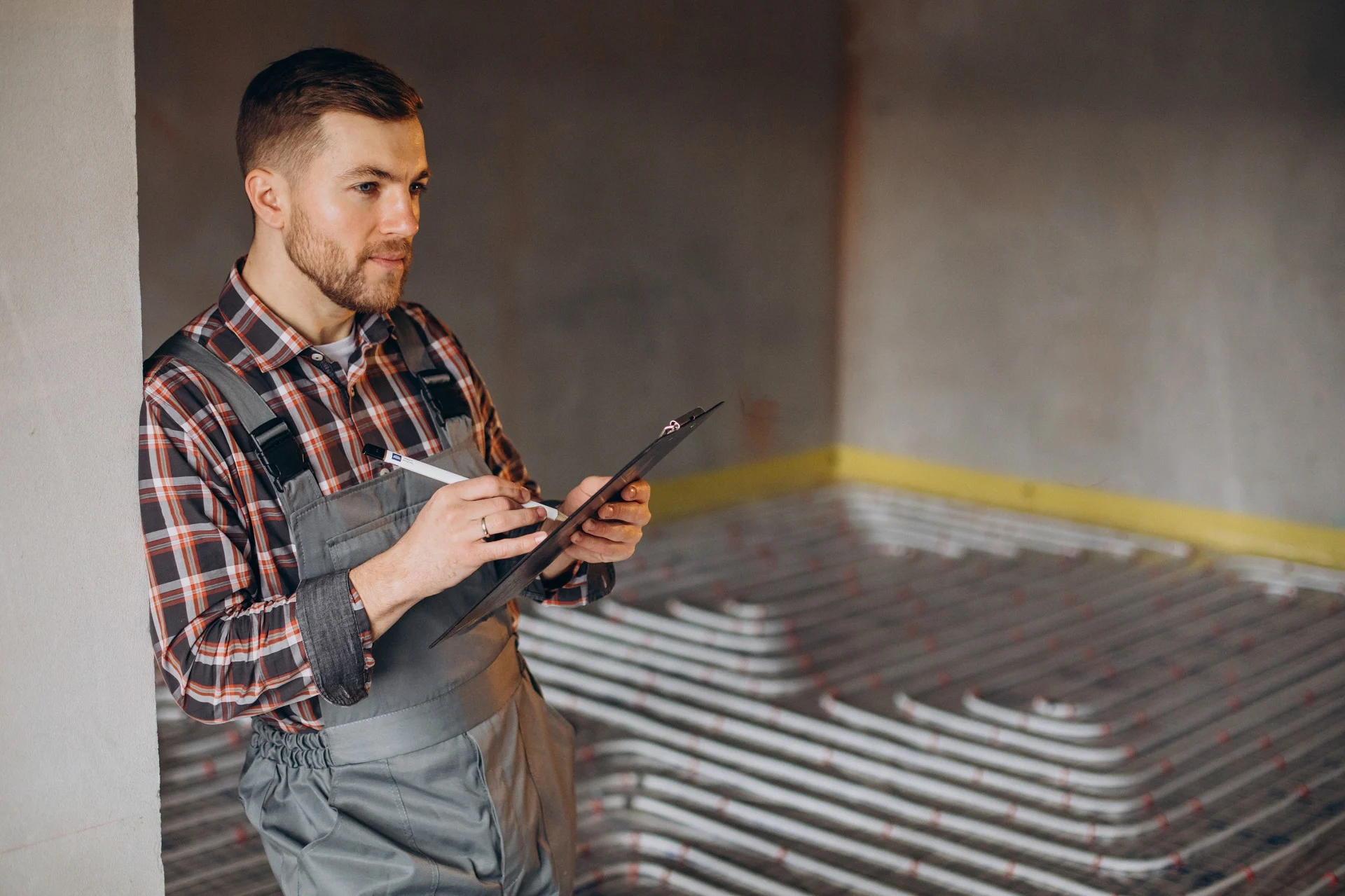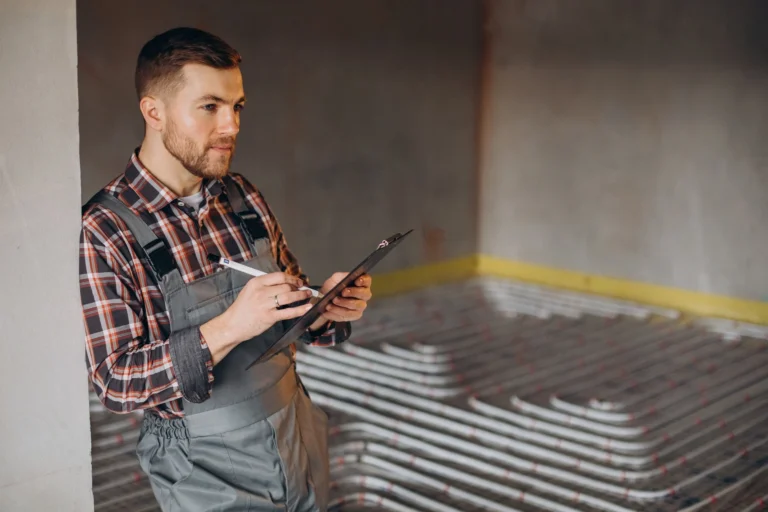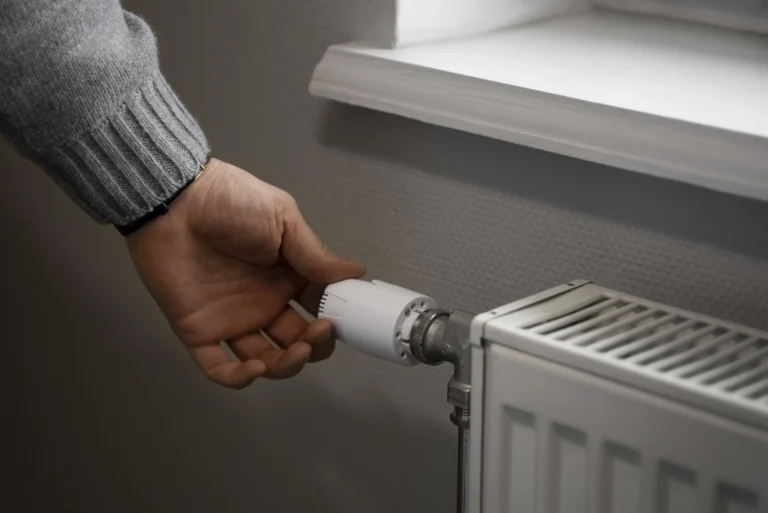Introduction: Noticing Your Radiator Cold at Bottom?
Have you ever walked into your home, reached out to check the warmth of your radiator… only to find it’s hot at the top but cold at the bottom? You’re not imagining things… and no, it’s not just how radiators are “supposed to work”.
A radiator cold at bottom usually means there’s a blockage inside, stopping hot water from circulating properly. If left unfixed, this could leave parts of your home colder, raise your heating bills, and put more strain on your boiler.
In this guide, we’ll explore what causes it, how to deal with it, and why fixing the problem can improve your overall heating efficiency, especially if you’re thinking about upgrading your system under the ECO4 Scheme.
What Causes a Radiator to Be Cold at the Bottom and Hot at the Top?
The most common cause of a radiator cold at bottom and hot at the top is sludge buildup. Over time, a mixture of rust, dirt, and debris forms inside your central heating system. Since sludge is heavier than water, it settles at the base of the radiator, right where the hot water is supposed to enter and spread out.
So, what happens?
The top of the radiator warms up because that’s where the water can still circulate, but the bottom stays cold because the heat can’t pass through the sludge.
Here’s what else sludge can affect:
- Your boiler has to work harder to maintain the temperature
- Heating takes longer to kick in.
- You get uneven warmth in different rooms.
- Your energy bills slowly creep up.
Keep in mind: while we’re here to guide you, Heatcore doesn’t offer radiator flushing or plumbing services. But if your heating issues are part of a bigger picture, like an old, inefficient boiler, you may be eligible for a free boiler replacement under ECO4.
Easy Fixes for Radiator Warm at Top, Cold at Bottom
If one or two radiators in your home are showing signs of this problem, there are a few simple things you can try before calling a professional.
🔧 Step-by-step: What You Can Try at Home
- Turn off your heating system
Always let everything cool down fully. Safety first. - Bleed the radiator
This involves releasing trapped air using a bleed key. If you hear a hiss and water follows, you’ve removed any air pockets, but this might not fix sludge issues. - Check for flow problems.
If your radiator still has cold patches at the bottom, you’re likely dealing with internal buildup rather than air. - Manual flush (DIY only if you know how)
Some homeowners remove the radiator, take it outside, and flush it through with a hose to dislodge sludge. This can work, but only if you’re confident.
If you’re unsure, it’s best to get a professional opinion. And if you’ve had your system for over 10 years, it might be time to think about replacing it rather than repairing it.
Don’t let old radiators drain your energy.
If your boiler’s outdated and your heating’s uneven, see if you qualify for a free boiler replacement through the ECO4 Scheme.
Check your eligibility with Heatcore.
When Power Flushing Isn’t Enough: Should You Replace Your Boiler?
Let’s say you’ve flushed the radiator or even paid for a professional to do a power flush, but the problem keeps coming back. This is often a sign that the boiler itself is struggling or your whole system is ageing.
A power flush is a temporary fix for a long-term issue.
So, how do you know when a boiler replacement is a better idea?
- Your boiler is over 10–12 years old.
- Heating takes too long to reach the rooms.
- Multiple radiators are cold at the bottom, warm at the top.
- Your bills are increasing despite no change in us. age
Modern condensing boilers work with much higher efficiency and often come with built-in protection against system sludge.
If you’re eligible under the ECO4 Scheme, you could get a brand-new boiler installed for free, helping you cut bills and improve home energy ratings long-term.
Old boiler giving you the cold shoulder?
Let Heatcore help you warm up your home for good.
Apply now for a free energy-efficient boiler.
Long-Term Prevention: Keep Radiators from Getting Cold at the Bottom
Now you know what causes the issue and how to deal with it, but how do you stop it from happening again?
Here are a few long-term prevention tips:
✅ Use inhibitor fluid in your system
This helps prevent sludge from forming by slowing down corrosion inside pipes and radiators.
✅ Install a magnetic filter
These are designed to catch iron and rust particles before they can settle. It’s a popular upgrade during boiler replacements.
✅ Get your system checked yearly
Even if your radiators seem fine, annual checks help spot problems early, especially as part of new boiler aftercare.
✅ Upgrade insulation
Sometimes, heat loss isn’t caused by the radiator at all. Poor insulation can exaggerate heating problems. If you’re eligible, Heatcore also supports insulation grants under the ECO4 Scheme.
Want to learn more about preventing radiator issues before they affect your comfort?
Check out our full post on radiator cold at bottom to dive deeper.
Is This a Sign of System-Wide Issues with Central Heating Radiators?
In many cases yes. If one radiator is blocked, it often means your whole system is carrying sludge. It travels with the water inside your central heating radiators, moving through the boiler, pump, and all the pipes.
And if you keep flushing radiators but don’t upgrade the boiler, you’re just treating the symptoms, not the root cause.
Plus, the older your system, the less efficient it is. That means:
- More fuel used
- Higher emissions
- More stress on components
- A worse EPC rating for your home
This is one of the reasons why the UK government introduced the Standard Assessment Procedure (SAP) to measure and improve the energy efficiency of homes nationwide.
A modern A-rated boiler not only improves heating but also helps bring your EPC rating up an important factor for homeowners, landlords, and tenants.
When to Act and When It’s Not Worth Repairing
You don’t have to jump to conclusions the moment your radiator feels off. Sometimes it’s just air in the system or a valve issue. But if you notice these signs, it’s time to take action:
- Multiple radiators with cold bottoms
- Your boiler keeps losing pressure
- Odd noises from pipes or radiators
- Your heating feels weaker overall
And if you’re thinking about calling out a plumber every few months for flushing or repairs? That money could go toward a full upgrade instead.
Heatcore doesn’t offer repair or flushing services but we do offer fully funded boiler upgrades, including installation by accredited professionals, with no cost to eligible households.
Final Thoughts: Say Goodbye to Radiator Cold at Bottom
A radiator cold at bottom might seem like a small problem, but it’s usually a sign of a larger issue within your heating system. From sludge buildup to ageing boilers, it all points to inefficiency and rising bills.
If you’re tired of uneven heat, noisy pipes, and radiator hot at top cold at bottom issues, it might be time to stop patching and start upgrading.
Thanks to the ECO4 Scheme, many UK households now qualify for free boiler replacements, insulation upgrades, and more all designed to help you heat your home smarter.BOFU CTA:
Stop wasting heat (and money).
Upgrade your heating system the right way with full support from Heatcore’s energy experts.
Contact us today and warm up your home for good




